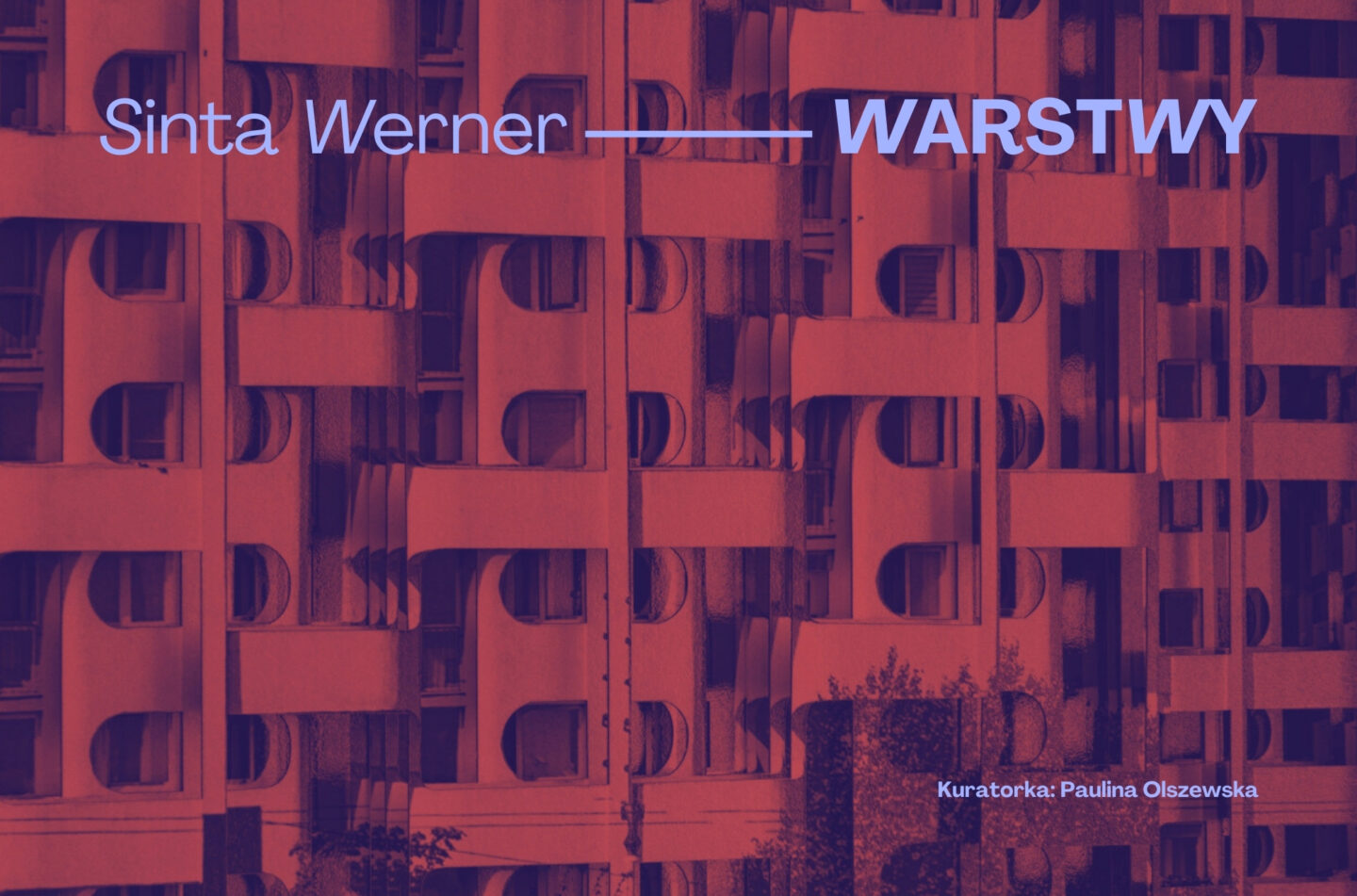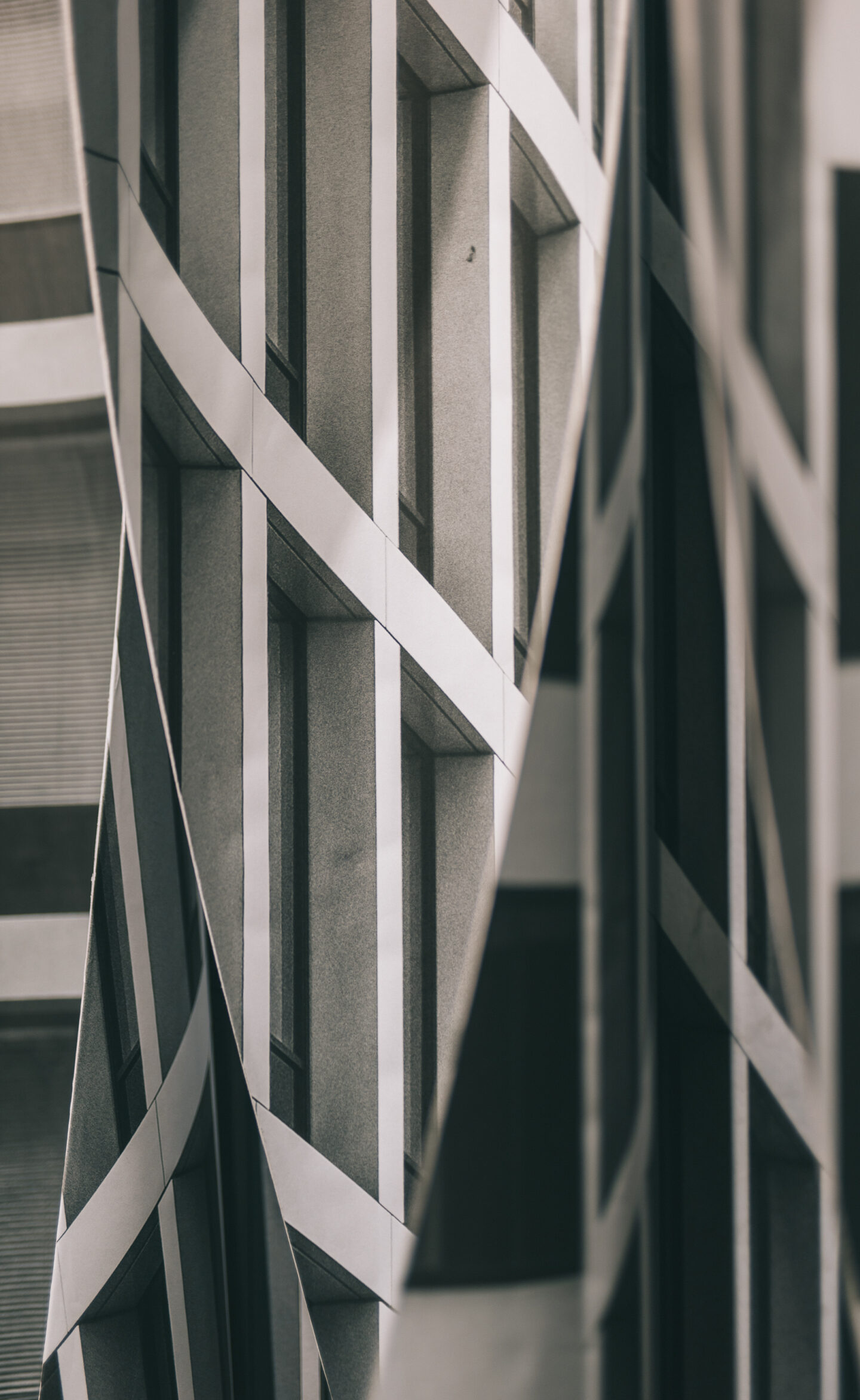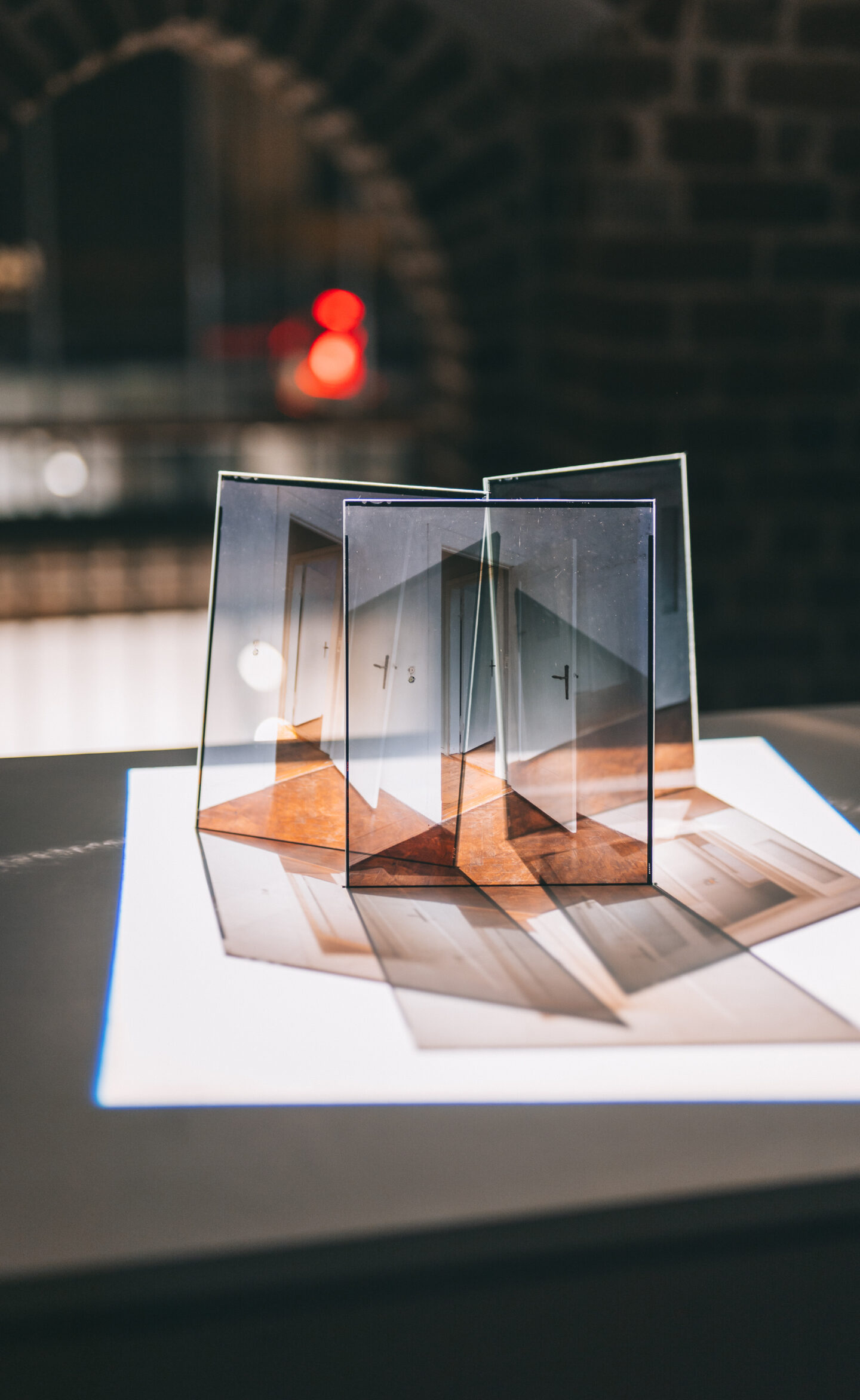
LAYERS
In Sinta Werner’s art she addresses the relationship between two- and three-dimensionality, between reality and its reproduction, physical presence and projection, as well as the interconnection of abstract and real space.
The starting point for the narrative of Sinta Werner’s exhibition was the FOTO-GEN space, in which the history of the city of Wrocław focuses as if through a lens. The oldest parts of the gallery date back to the 13th century. The building has subsequently undergone several transformations, these include: a medieval section, a 1970s modernist pavilion, as well as architectural changes made in the late 1990s.
The character of the FOTO-GEN Gallery, where different layers of history and architecture intermingle, coexist, and also enter into a dialogue with each other, is an ideal backdrop for Sinta Werner’s artistic practice. In her art, the artist addresses the relationship between two- and three-dimensionality, between reality and its reproduction, physical presence and projection, as well as the interconnection of abstract and real space. In her collages, installations or sculptures, the artist uses photography to achieve a multiplication of physical reality. Thus, Werner’s works create illusory spaces that provoke disorientation and deceive the eye of the viewer. The artist deliberately draws upon the geometric and rational functionalism the tenets of modernist architecture are based on. Modularity and repetition of the forms allow her to introduce visual disturbances and play with the viewer’s perception.
The narrative of the ‘Warstwy’ (‘Layers’) exhibition is built around Sinta Werner’s main sources of inspiration. The artist focuses on the Wrocław modernism, seeing it as a cultural legacy of the city and an important part of its identity. She sees this direction as a link between two seemingly different faces of the city. Werner refers to the universal character of modernism, which shaped pre-war Wrocław in terms of urban planning, turning it into a modern German metropolis. The post-war redevelopment of Wrocław drew on the same goals of the trend, in this case as a way of building a new Polish identity. Sinta Werner looks at the architecture of the city from a timeless perspective. This allows her to move away from the historical and political context, and focus on the very essence of a building, seen simply as a form made up of lines, divisions, and rhythm. Thus, real objects lose their physicality and become abstract images, removed from the utilitarian context for which they were created and within which they function.
When thinking about the context of Wrocław, Sinta Werner used one of the city’s icons: the so-called ‘Sedesowce’ by Jadwiga Grabowska-Hawrylak, created in the 1970s. The artist transformed the photographs of the buildings she had taken into multi-dimensional collages, based on the rhythm of the balcony layout. She also draws upon the most recent architectural developments introduced in the city and has processed them in a non-obvious way. The earlier works based on modernist architecture from different parts of the world will also be included in the exhibition. The juxtaposition of recent and previous artistic works means that visitors will see familiar forms and architectural layouts which, however, will be difficult to assign to a specific urban space within the city.
Curator:
Paulina Olszewska
Coordination & Production:
Paweł Bąkowski, Olga Krzywiecka
Honorary patronage:
Konsulat Generalny Republiki Federalnej Niemiec we Wrocławiu
Exhibition Partner:
Alexander Levy Galerie
Proofreading:
Monika Wójtowicz
Translations:
Fabryka Tłumaczeń
Visual Identity:
Olga Krzywiecka
Accompanying program:
Aleksandra Tews
Exhibition realization:
Michał Perucki
This project was co-financed from the budget of the Lower Silesian Voivodeship Government and from a grant from the Foundation for Polish-German Cooperation
Sinta Werner (* 1977) lives and works in Berlin. She studied at the University of the Arts Berlin and graduated with a Master of Fine Arts from Goldsmiths College in London in 2007. Her art plays with the relationship between two- and three-dimensionality, reality and reproduction, physical presence and projection, and the interconnection of virtual and real space. In her photo-collages, installations, and sculptures, she uses the doubling of physical reality that results from illusory spaces or mirrors to produce confusion and deceive the eye. In her work, she occupies herself with the geometric rationalism of the functionally characterized architecture of modernism. In her works, glass is used both as a physical component and as a symbol for the medial mediation of the world in the digital age. The glass transfers the pictorial space into the third dimension and refers to windows and façade elements in architecture. At the same time, the image appears virtual and dematerialized, caused by the optical refractions and the changeability of the image through the viewer’s point of view.
13.12, 6pm
14.12, 1pm
18.01, 7pm
13.03, 6pm





















